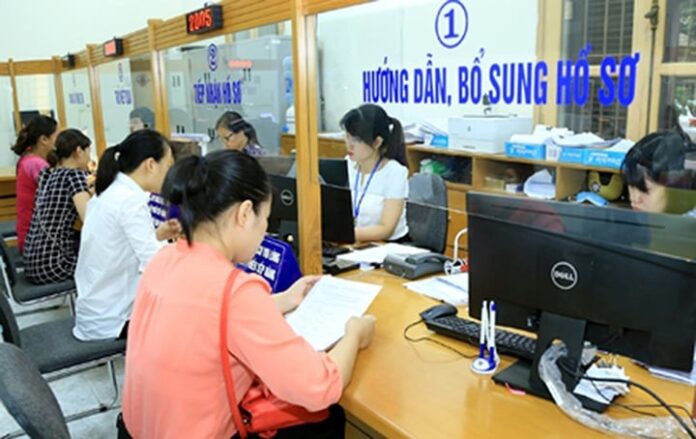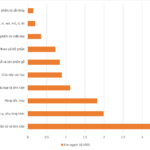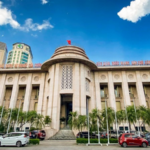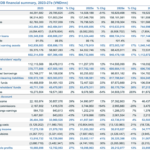Deputy Prime Minister Nguyen Hoa Binh has signed Decision No. 1671/QD-TTg, approving a plan to cut and simplify administrative procedures related to production and business activities under the management of the Ministry of Agriculture and Environment.
CUTTING AND SIMPLIFYING ADMINISTRATIVE PROCEDURES RELATED TO PRODUCTION AND BUSINESS IN 13 FIELDS
Accordingly, the Prime Minister approved the cutting and simplifying of administrative procedures related to production and business activities in 13 fields: nature conservation and biodiversity; climate change; sea and islands; livestock and veterinary; surveying, mapping, and geographical information; hydrometeorology; science and technology; forestry and forestry administration; environment; water resources management; construction and management of hydraulic works; fisheries and fisheries surveillance; and crop production and plant protection.
Specifically, in the field of climate change, for the administrative procedure of registering the use and allocating quotas for the production and import of controlled substances, the time required has been reduced from 13 days to 7 days by simplifying the registration process and reducing the time for checking and evaluating applications.
For the allocation of quotas for the production and import of controlled substances, the processing time has been reduced from 33 working days to 29 working days by cutting down on the evaluation time. The requirement for organizations and individuals to submit certain documents has also been removed, as this information can now be retrieved from specialized databases, such as legal entity certificates and business registration documents.
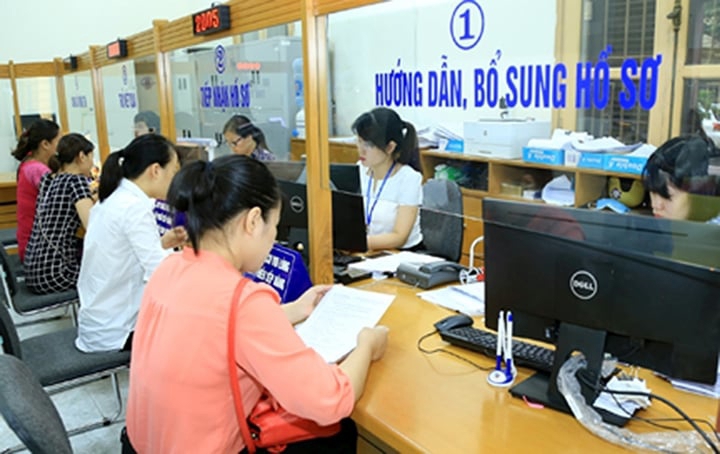
The time required for adjusting and supplementing quotas for the production and import of controlled substances has also been reduced from 33 working days to 29 working days.
In the field of environment, the time required for issuing the Vietnamese Eco-Label Certification has been reduced from 35 days to 30 days. Several components of the application dossier have been removed, including notarized copies of business registration certificates and lists of registered business lines, as well as various environmental procedure approval decisions, confirmations, and periodic environmental monitoring reports.
For the environmental impact assessment report (at the ministry level), the assessment time for projects in Group I has been reduced from 45 days to 30 days, and for projects in Group II from 30 days to 20 days. Additionally, the time required for the competent authority to consider and approve the assessment results has been cut down from 20 days to 15 days.
Furthermore, this administrative procedure has been eliminated for projects that require the conversion of rice cultivation land with two or more crops per year but actually use very little rice land, such as rural road construction, schools, cultural houses, and police station projects. The authority to assess environmental impact reports for projects requiring the conversion of rice cultivation land has been decentralized to the local level.
Regarding the environmental impact assessment report at the provincial level, the assessment time for projects in Group II has been reduced from 30 days to 20 days, and the time required for the competent authority to consider, approve, and assess has been cut down from 20 days to 15 days. The number of projects required to carry out environmental impact assessments has also been reduced.
For the administrative procedure of issuing environmental permits at the central level, the processing time has been reduced from 45 days to 32 days. The permitting authority has been adjusted based on the scale and nature of the projects, with the Ministry of Agriculture and Environment issuing permits for projects similar in scale and nature to those in Group I. The number of times that the opinions of state management agencies must be obtained has been reduced from two to one for projects that only discharge treated wastewater into hydraulic works, such as schools, agency offices, resettlement areas, and land auction areas.
For the administrative procedure of issuing environmental permits at the provincial level, the permitting authority has also been adjusted based on the scale and nature of the projects. The People’s Committee at the provincial level is now responsible for issuing permits for projects in Groups II and III. Similar to the central level, the number of times that the opinions of state management agencies must be obtained has been reduced from two to one for projects that only discharge treated wastewater into hydraulic works.
CUTTING AND SIMPLIFYING INVESTMENT AND BUSINESS CONDITIONS IN 36 CONDITIONAL BUSINESS LINES
According to this Decision, investment and business conditions will also be cut and simplified in 36 conditional business lines under the 2020 Investment Law, including: seafood business; testing services for aquatic animal feed, animal feed, biological products, microorganisms, chemicals, and environmental treatment products in aquaculture and livestock; shipbuilding and repair; training and retraining of fishing vessel crew members; cultivation and breeding of endangered wild plant and animal species listed in the appendices of the CITES Convention and the List of Endangered and Precious Forest Plants, Animals, and Aquatic Species;
Business lines with conditions specified in the 2020 Investment Law: breeding of common wild animals; export, import, re-export, transit, and domestic import from the sea of specimens of species listed in the appendices of the CITES Convention and the List of Endangered and Precious Forest Plants, Animals, and Aquatic Species;
Pesticide business (conditions for pesticide production facilities); provision of plant quarantine treatment services (conditions for organizations practicing plant quarantine treatment services); provision of plant protection services (conditions for plant protection service activities); fertilizer business;
Aquatic animal feed and livestock feed business; trading of biological products, microorganisms, chemicals, and environmental treatment products for aquaculture and livestock; veterinary drug, vaccine, biological product, microorganism, and chemical trading for veterinary use; livestock farm business; slaughtering of livestock and poultry; construction of land database services; import of scrap; and environmental monitoring services.
A notable aspect of the approved plan is the complete elimination of certain administrative procedures, such as registration for access to genetic resources, confirmation of contracts for access to genetic resources and benefit-sharing, recognition of test results for genetically modified organisms, re-issuance of dumping permits, recognition of feed testing methods for exporting countries, recognition of feed testing procedures and approval of aquatic animal feeds from exporting countries, and issuance of permits for offshore aquaculture to Vietnamese organizations, individuals, and foreign investors. These eliminations aim to prevent the waste of resources by administrative agencies and reduce compliance costs for citizens.
On the Eve of the US’ 20% Retaliatory Tariffs: How Much Has Vietnam Exported to the World’s Largest Economy?
The U.S. government has announced a new decree that will impose a 20% tariff on goods from Vietnam, effective August 7th. This significant development in international trade relations has the potential to impact a wide range of industries and businesses, both in the U.S. and abroad. With this new tax in place, it is crucial for companies to reevaluate their supply chains and strategies to mitigate any potential negative consequences. Stay tuned as we bring you in-depth analysis and insights on how this tariff may affect your business and explore possible avenues to navigate this changing economic landscape successfully.
“The Government Directs the State Bank to Proactively Adjust Credit Growth Targets for 2025 in Line with Inflation, Aiming for an Economic Growth of 8.3 – 8.5%”
The government has just issued Resolution No. 226/NQ-CP dated August 5, 2025, outlining ambitious growth targets for various sectors, domains, and localities across the nation. This comprehensive resolution sets forth critical tasks and solutions to ensure that Vietnam achieves an impressive overall growth rate of 8.3 – 8.5% for the year 2025.
International Experts Predict HDBank’s Profit to Surpass 23,000 Billion VND by 2025
In Q2 of 2025, HDBank reported a remarkable pre-tax profit of VND 4,713 billion, bringing its total profit for the first half of the year to VND 10,068 billion. This impressive performance marks a 23% increase compared to the same period in 2024, solidifying the bank’s position among the top-performing financial institutions in the country.

























